Shared Hope International is pleased to announce Michelle Guymon and Margie Quin as the 2016 Pathbreaker Award Honorees.
About the Award
In 2000, the U.S. Department of State enlisted Shared Hope International to host Pathbreaking Strategies conferences in six countries to energize the conversation about trafficking and share innovative approaches to combat the problem. During this process, we created the Pathbreaker Award to recognize the pioneering efforts of those who broke the trend of inaction and initiated proactive responses to prevent sex trafficking.
This year, Shared Hope International is proud to honor these individuals who have developed innovative strategies to combat demand, expose trafficking, and seek justice.

Michelle Guymon, MSW – Director of the Child Trafficking Unit Los Angeles County Probation Department
Michelle Guymon is Director of the Child Trafficking Unit with Los Angeles County Probation Department, the nation’s first probation department with a unit specifically devoted to addressing the physical, mental and emotional needs of commercially sexually exploited youth. Michelle has been instrumental in the creation and implementation of the Los Angeles County’s Law Enforcement First Responder Protocol for Commercially Sexually Exploited Children for which she serves as the project manager. This nationally recognized protocol which was launched in August 2014 places a priority on treating trafficked children as victims rather than criminals. She is a frequent presenter and trainer, has received numerous awards for her work in the area of child sex trafficking, and has been featured in the media as a subject matter expert on the topic, specifically within the juvenile justice system. Michelle is currently the lead on the Los Angeles County CSEC Action Team working with various county/community agencies to create a multi-system response model for CSEC in Los Angeles County. Michelle prioritizes survivor leadership in her work, and has led the development of an innovative yearly conference created by young survivors for young survivors. She provides field expertise to Shared Hope through her ongoing work as a member of our JuST Response Council. She is an advocate for youth and is very passionate about her work within the Probation Department.
 Margie Quin – Assistant Special Agent in Charge Tennessee Bureau of Investigation
Margie Quin – Assistant Special Agent in Charge Tennessee Bureau of Investigation
Margie’s twenty-three years of law enforcement experience include patrol, criminal investigations, high-tech surveillance, drug interdiction, supervision and leadership. Margie received her M.S. in Public Service Management from Cumberland University, a B.S. in Criminology from Auburn University and graduated from the 241st session of the F.B.I. National Academy. During her nineteen years with the Tennessee Bureau of Investigation, her assignments included the Middle Tennessee Drug Division, Technical Services Unit and she was promoted in April of 2007 to Assistant Special Agent in Charge in the Criminal Intelligence Unit, housed within the Tennessee Fusion Center. In 2010, ASAC Quin led a T.B.I./Vanderbilt team to research and publish the groundbreaking and award winning study, “Tennessee Human Sex Trafficking and its Impact on Children and Youth.” This study has paved the way for passage of 43 pieces of legislation in the state of Tennessee since 2011. ASAC Quin supervises the first-ever statewide Human Trafficking Unit. The newly formed unit has conducted six major undercover operations across the state since 2015. These demand reduction operations, code named, “Someone Like Me,” have resulted in the arrest of over 120 men and identified over 30 women, who were provided services at the time of encounter. ASAC Quin’s career awards include: 2000 T.B.I. Agent of the Year, 2009 AMBER Alert Coordinator of the Year for the United States and 2014 Tennessee Victim Advocate of the Year.

About This Year’s Awards
This year’s Pathbreaker awards are original works by Kristen Tebow, a survivor of sex trafficking and leader in the anti-trafficking movement. After 8 years of sobriety and two bachelor’s degrees, she is currently pursuing her Masters in Social Work and engaged full time as a trainer, presenter, and advocate in the Lawrence, KS community where she was trafficked. Kristen uses the wisdom gained through her trauma in her work with youth and adult survivors of commercial sexual exploitation. Besides being a wife and “mother” of two Jack Russell Terriers, she is an accomplished painter. Here is her description of the motivation behind the works she created for the Pathbreaker Awards:
Learning to Swim—“I have learned that life will always have storms and frightening waves. You can’t stop the waves, but you can learn to swim through them. It’s how you handle them that really counts.”
Lifeline —“Wonderful people in my life have led me to my current state of peace. I didn’t get there by myself; the many people who have cheered me on continue to be the lifeline that pulls me forward.”
 From the day she arrived on Capitol Hill, it was clear that she cared about children and would be a tireless force for hidden victims everywhere. In 1998 she traveled to Mumbai and saw women and children enslaved in brothels, sold as commodities. She was angry. She returned home and undertook an unprecedented effort to evaluate the situation in her own country. She found that this was not just a problem on the other side of the world; it was also a problem in the United States. She turned her anger and indignation into action, founding Shared Hope International and beginning a nearly two decade long campaign to eradicate domestic minor sex trafficking.
From the day she arrived on Capitol Hill, it was clear that she cared about children and would be a tireless force for hidden victims everywhere. In 1998 she traveled to Mumbai and saw women and children enslaved in brothels, sold as commodities. She was angry. She returned home and undertook an unprecedented effort to evaluate the situation in her own country. She found that this was not just a problem on the other side of the world; it was also a problem in the United States. She turned her anger and indignation into action, founding Shared Hope International and beginning a nearly two decade long campaign to eradicate domestic minor sex trafficking.





